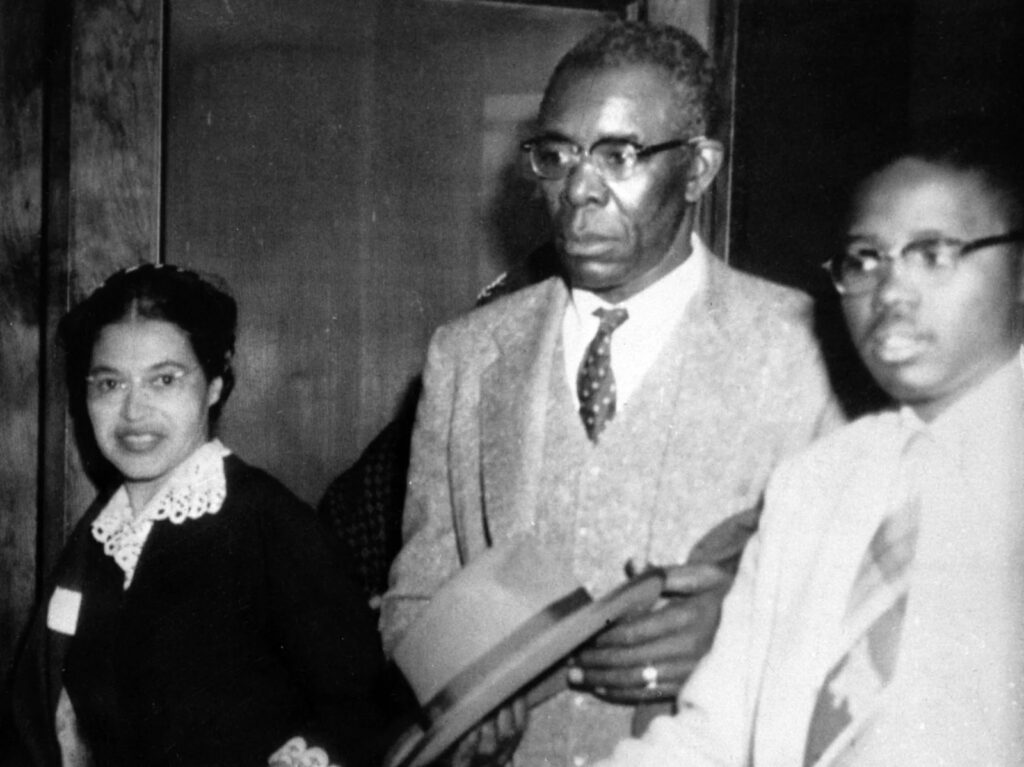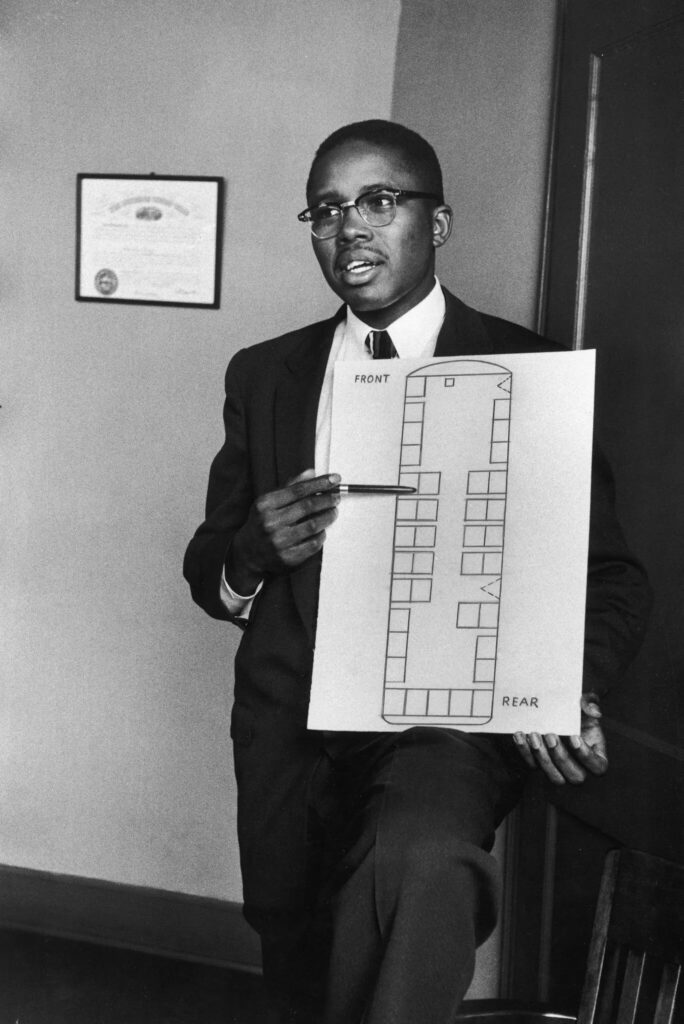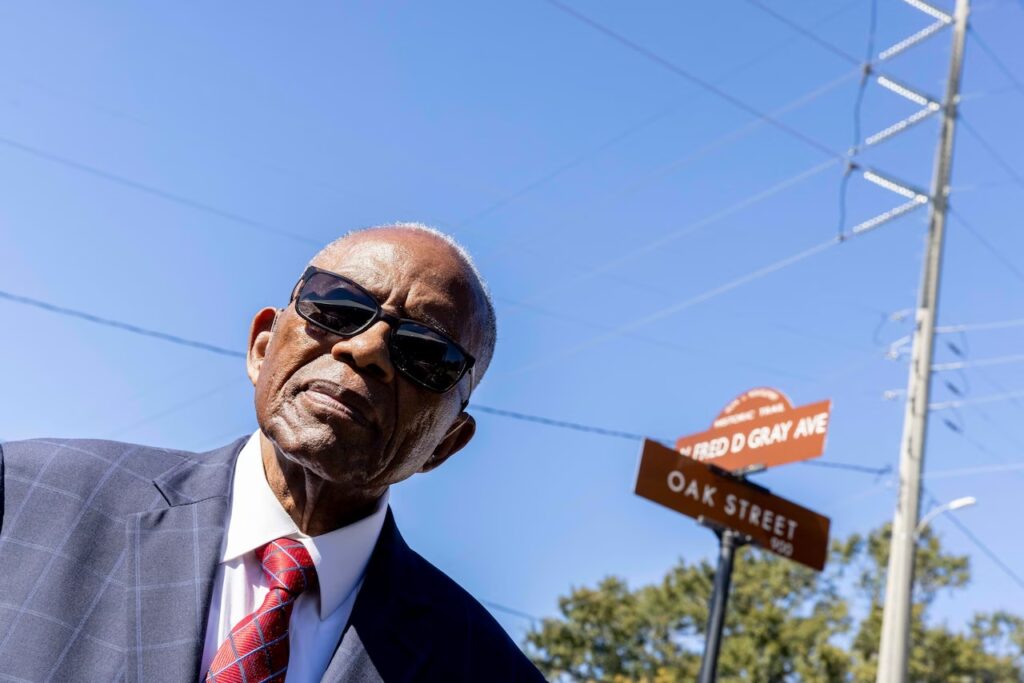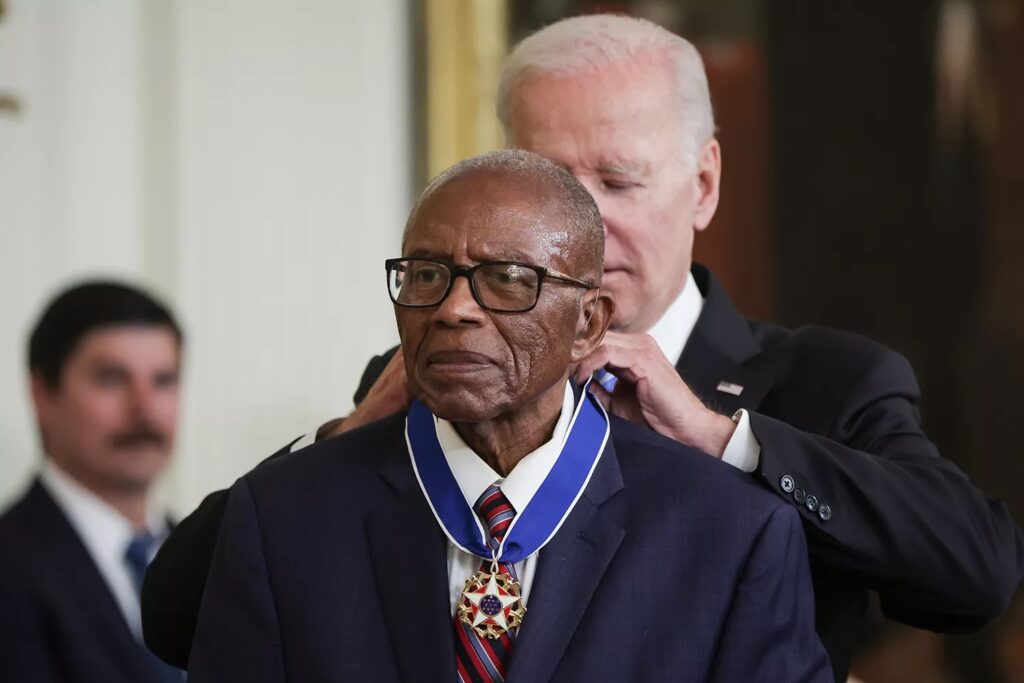Yesterday EJI dedicated the most prominent boardroom at Elevation Convening Center and Hotel in downtown Montgomery, Alabama, in honor of a civil rights icon. The Fred D. Gray Boardroom celebrates the life and work of the legendary lawyer, who began his storied career in 1955 by representing Claudette Colvin and Rosa Parks, whose cases sparked the Montgomery Bus Boycott.
The Rev. Dr. Martin Luther King Jr. and dozens of other leaders of the Montgomery Bus Boycott, including Aurelia Browder, were among the civil rights activists represented by Fred Gray, who was arrested and threatened with disbarment and violence.
He filed a lawsuit challenging racial segregation on city buses in Montgomery as unconstitutional. The city and the State of Alabama fiercely resisted, but Mr. Gray took the case all the way to the U.S. Supreme Court—and won.
The Court’s 1956 decision in Browder v. Gayle struck down racial segregation on public transportation and represented a landmark victory in the struggle for equal rights in America.
A decade later, Mr. Gray’s legal work was integral to the success of the Selma to Montgomery March that led to the passage of the Voting Rights Act in 1965.

/
Rosa Parks, E.D. Nixon, and Fred Gray at her release after her December 1, 1955, arrest, which sparked the Montgomery Bus Boycott.
AP
/
Fred Gray uses diagram of a bus to illustrate his argument against racial segregation on Montgomery buses in 1956.
Don Cravens/Getty
/
The Rev. Dr. Martin Luther King Jr. laughs with Fred Gray, whom King called “chief counsel for the protest movement.”
AP
/
In 2021, the city of Montgomery renamed Jeff Davis Avenue in honor of Fred Gray.
AP
/
President Joe Biden awards Fred Gray the Presidential Medal of Freedom on July 7, 2022.
Alex Wong/GettyFred Gray went on to become the first African American president of the Alabama State Bar Association and one of the first African Americans elected to the Alabama legislature since Reconstruction. In 2022, Mr. Gray was awarded the Presidential Medal of Freedom—the nation’s highest civilian honor.
He continued to do extraordinary work on behalf of the poor and people who are vulnerable and marginalized. He represented Black students who were denied admission to Alabama universities because of their race and secured a settlement for victims of the Tuskegee Syphilis Experiment.
In 2021, the Montgomery street on which Fred Gray grew up—which was then named for Confederate President Jefferson Davis—was renamed in his honor.
“The struggle for equal justice has not ended,” Mr. Gray said at the unveiling of Fred D. Gray Avenue. “We are still living in a society that has two basic problems: racism and inequality. They are still there. We still have a responsibility…Don’t wait on somebody to tell you what to do. Make up your mind. See what these problems are, and get out to solve the problem.”
At nearly 95, Fred Gray still practices law from his office in Tuskegee, Alabama.
He has been hugely supportive of EJI’s work and we are thrilled that our new convening center and hotel, which opened in October, now has a space with an expansive view that reflects Mr. Gray’s creative and comprehensive vision of justice.
That view includes our newest site, Montgomery Square, which will tell the stories of ordinary people in Montgomery who did extraordinary things that changed the world, starting with the Montgomery Bus Boycott in 1955. It opens in February 2026.